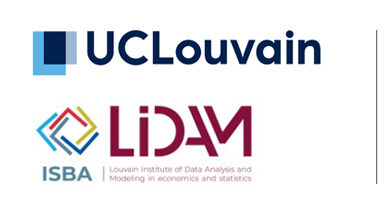Survival data analysis encompasses a broad field of statistic dedicated to the analysis of time-to-event data. The response variable of interest is thus the time from a given origin to the occurence of a well defined event. What make surival data so peculiar, is the presence of censoring, namely the fact that the exact event time is not always available. The most common form of censoring occurs when we have not followed all observations long enough to observe the occurence of the events; the observations who did not (yet) experience the event of interest at the last follow-up time are said to be right-censored. A typical example are cancer patients entered in an oncology randomised clinical trials, with overall survival as the primary outcome. The event-time of interest is thus the time between randomisation and death. However, at the the time of analysing the data, some of the patients will still be alive and will therefore be right-censored at the time last known to be alive. Time-to-event data are common in medical research, but also in very different other application domains, such as epidemiology (time to the first cigarette), engineering (time Site WEB – Catherine Legrand 9 to the breakdown of a machine), sociology (time to the first child), psychology (time to finding a solution to a problem for a child in psychology), …
Research on survival data analysis has exploded over the last decades resulting in numerous new developments and a multitude of publications and textbooks on the subject. However most of these textbooks have either mainly concentrate on « classical survival analysis » or are focussing specificaly one type of extensions. By classing survival analysis, we mean assuming independent observations, one single event of interest that would be observed for all observations if follow-up would be long enough, no competing risks, and considering adjustment only for covariates measured at baseline. This book therefore aims to gather in a single reference some more advanced survival models, such as frailty models (in case of unobserved heterogeneity or clustered data), cure models (when a fraction of the population will not experience the event of interest), competing risk models (in case of different types of event), and joint survival models for a time-to-event endpoint and a longitudinal outcome. The objective of this book is to address all of these issues with a practical perspective, and with unified notations and level of explanation. This book will mainly focus on applications from the medical research, and is illustrated with the analysis of several rela like datasets. However, all the techniques considered in this book also have applications in many other fields. Below, we provide access to the datasets that have been used to illustrate this book, as well as main part R and SAS code to re-produce the analyzes presented in this book
